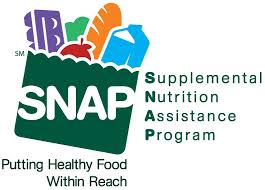In these tough economic times, it is difficult for American families to adequately provide the basic necessities, such as groceries. I am a full-time student and a stay home mother, of an infant son, and a six-year old daughter with a neurological behavioral disorder. I run our simple family of four from our home. We have recently found ourselves asking the distressing question of how we are going to provide for our children. My boyfriend works full-time and is self-employed, providing not only for our household but for his parent’s household as well. With my boyfriend’s support I have recently swallowed my pride and sought government aid. Inflation inhibits the inability to stretch the American dollar and causes many families to seek government assistance from welfare programs to provide food, in turn significantly contributing to the national debt.
Inflation in the Food Sector
Inflation in the food sector makes it difficult to provide enough food for households. Inflation is a rise in the general level of prices of goods and services over a period of time. When inflation occurs, the general price for a product increases; therefore, the consumer purchases less products for the amount spent. According to the U.S. Bureau of Labor Statistics, “The food at home index has risen 3.3% over the last twelve months”. Consequently the type of goods purchased and the type of food consumed changes to reflect these times. I would typically spend anywhere from $300 dollars a month on groceries, whereas two years ago I could feed my family for about $180 a month. Purchasing groceries no longer occurs in just one store, for our household. Grocery ads in the mail assist in directing us where to purchase our groceries for a reasonable price. As I attempt to be cost-effective in my spending, I buy the cheapest products displayed on the shelf, and compare price to quantity. The types of food we eat have changed along with my creativity when preparing meals has increased significantly. With that being said, feeding a family of four with the amount of groceries bought lasts a shorter amount of time, as more persons consume the food. We had to seek assistance.
Supplemental Nutrition Assistance Program
Welfare programs such as Supplemental Nutrition Assistance Program (SNAP), is food programs offered through the Human Services Department. This program is often referred to as food stamps. SNAP helps eligible low-income households but the food necessary by providing a certain amount of monies credited to an electronic benefits card for the sole purchase of groceries . I have recently applied to this program along with others in order to assist my family in making ends meet. I am a prideful woman and it scorns me to no end that I have to resort to such assistance. However, with my pride set aside, my thoughts are quieted in the fact that I have contributed to tax paying for the last 15 years of my life, and if being on such a program assists my children, then I am willing to use it temporarily.
Fraudulent Users and Mismanagement by the Government
According to Blake in CNN Money, “Food stamp use rises to 45.8 million. This is nearly 15% of the U.S. population.” The fact that so many families are receiving government aid significantly contributes to our national debt. As inflation increases, it causes more money to be spent to equal the amount of product purchased to the quantity of items previously purchased for the same dollar amount. Ideally with more money being spent, it should help the economy. However, when the money is given to families by the government to be spent, the government is only getting back what they put out. The granted monies only circulates, it does not accumulate; thus, the government is giving more than it is receiving. It is a catch twenty-two situation. I attribute this problem. However it is not the honest users that maliciously attribute, but the fraudulent users to include mismanagement by the government.
Inflation inhibits the inability to stretch the American dollar and causes many families to seek government assistance from welfare programs to provide the basic necessities, in turn significantly contributing to the national debt. With the inflation increase driving consumer cost up by 3.3 percent, 15 percent of American families seek the assistance from government funded food programs that attributes to the economies deficit. Governmental assistance is there for the American citizens that truly need it only as a temporary crutch. These programs were not meant to be the sole financial means for a family to live off the welfare system. Americans who use the system wisely and humbly can know that they are not contributing to our economic downfall. That blame can be placed on those who take advantage of the system in order to seek an easy way out. We are doing what we have to survive, yet we are contributing to the problem; therefore, the government sees no relief, in turn, neither do we.
References
Ellis, B. (2011, August 04). CNN Money. Retrieved May 29, 2012, from Central News Network: http://money.cnn.com/2011/08/04/pf/food_stamps_record_high/index.htm
New Mexico Human Services Department. (n.d.). Income Support Division. Retrieved May 29, 2012, from New Mexico Human Services Department: http://www.hsd.state.nm.us.isd/
Powell, J. (2011, October 13). Why Government Spending is Bad for Our Economy. Retrieved May 29, 2012, from Cato Institute: http://www.catoinstitute.org/publications/why-government-spending-is-bad-our-economy
U.S. Bureau of Labor Statistics. (2012, May 15). Consumer Price Index Summary. Retrieved May 29, 2012, from http://www.bls.gov/CPI: http://www.bls.gov/news.release/cpi.nrO.htm
